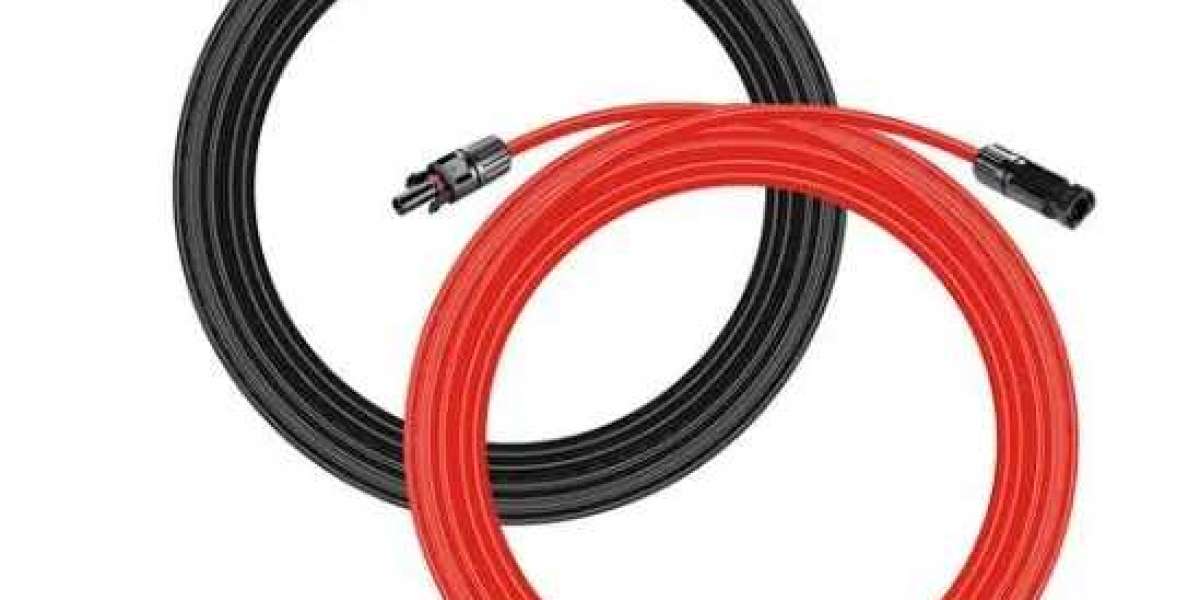When setting up a solar power system, selecting the right solar panel cable is just as important as choosing the solar panels, inverter, and batteries. The efficiency and safety of a solar system depend heavily on the proper selection, installation, and maintenance of its wiring. A wrong cable choice can lead to power loss, overheating, and system failure.

This article will guide you through the process of choosing and installing the right solar panel cable to ensure optimal performance, safety, and longevity of your solar power system.
What Is a Solar Panel Cable?
A solar panel cable is a specialized electrical cable used to connect solar panels to the inverter, charge controller, and batteries. These cables are designed to handle high voltages and direct current (DC) power while being resistant to harsh environmental conditions such as UV radiation, extreme temperatures, and moisture.
Types of Solar Panel Cables
There are different types of cables used in a solar power system, each serving a specific purpose:
1. PV (Photovoltaic) Cables
Used for interconnecting solar panels in a PV array.
Designed for high-voltage DC power transmission.
2. DC Cables
Carry direct current (DC) from solar panels to charge controllers and inverters.
Typically thick, insulated cables to handle high currents.
3. AC Cables
Carry alternating current (AC) from the inverter to the main electrical panel or grid.
Used in grid-tied solar systems.
4. Battery Cables
Connect solar batteries to charge controllers or inverters in off-grid systems.
Require large gauge cables to handle high current loads efficiently.
5. Grounding Cables
Used to ground the solar system for safety, preventing electrical faults and lightning damage.
How to Choose the Right Solar Panel Cable
1. Select the Correct Cable Size (Gauge/AWG)
The most critical factor in choosing a solar cable is size, which is measured in AWG (American Wire Gauge). The thicker the cable, the lower the resistance, ensuring efficient power transmission.
Common sizes for solar panel cables:
10 AWG – Suitable for most residential solar systems.
8 AWG – Used for longer cable runs or higher power output.
6 AWG – Required for high-current applications, such as battery connections.
Why Cable Size Matters:
Undersized cables can lead to voltage drops, reducing system efficiency.
Oversized cables increase costs but ensure better power transmission and safety.
2. Choose the Right Conductor Material
The material of the cable impacts its conductivity and durability:
Copper – Best conductor with low resistance, ensuring high efficiency.
Aluminum – Cheaper but has higher resistance, requiring a larger cable size.
Tinned Copper – More resistant to corrosion, ideal for humid environments.
Recommendation: Copper cables are the best choice for solar power systems due to their superior conductivity and long-term performance.
3. Consider Voltage and Current Ratings
Each solar cable is rated for a specific voltage and current capacity.
Most PV cables are rated for 600V, 1000V, or 1500V DC.
Ensure the cable matches the voltage rating of your solar panels and system.
4. Select Weather-Resistant Insulation
Solar cables must withstand outdoor exposure for years. Look for:
✔ UV-resistant insulation to prevent degradation.
✔ XLPE (Cross-linked Polyethylene) or PVC insulation for heat resistance.
✔ Flame-retardant properties for safety.
5. Compatibility with MC4 Connectors
Most solar panels use MC4 connectors for quick and secure wiring. Ensure that the solar cable you choose is:
✔ Compatible with MC4 connectors for easy installation.
✔ Has proper polarity labeling to prevent connection errors.
How to Install Solar Panel Cables Properly
Tools Required
Before starting the installation, gather these tools:
✔ Wire Stripper – For removing insulation from the cable.
✔ MC4 Crimping Tool – To attach connectors securely.
✔ MC4 Spanner Wrench – To tighten and lock MC4 connectors.
✔ Multimeter – To test voltage and continuity.
✔ Cable Ties and Clips – For securing the cables.
Step-by-Step Installation Guide
Step 1: Plan the Cable Route
Determine the shortest and safest route for running cables from the solar panels to the inverter.
Avoid sharp bends, excessive lengths, and high-heat areas.
Step 2: Strip and Prepare the Cables
Use a wire stripper to remove about 5-7mm of insulation.
Ensure the exposed copper wire is clean and undamaged.
Step 3: Attach MC4 Connectors
Insert the stripped wire into the MC4 contact pin.
Use the crimping tool to securely attach the pin.
Push the contact pin into the MC4 housing until it locks in place.
Step 4: Connect the Solar Panels
Connect the positive (+) cable to the male MC4 connector.
Connect the negative (-) cable to the female MC4 connector.
Click the connectors together to form a secure connection.
Step 5: Secure the Cables
Use UV-resistant cable ties to keep cables neat and prevent movement.
Avoid loose cables that could be damaged by wind or animals.
Step 6: Test the System
Use a multimeter to check voltage and ensure proper polarity.
Ensure there are no loose connections or power losses.
Common Mistakes to Avoid
? Using the Wrong Cable Size – Causes voltage drops and inefficiency.
? Mixing Different Connector Brands – Can lead to poor connections.
? Skipping MC4 Connector Crimping – Increases resistance and overheating risk.
? Not Securing Cables Properly – Leads to wear and tear over time.
? Incorrect Polarity Connection – Can damage the inverter and batteries.
Maintenance Tips for Solar Cables
? Inspect Cables Regularly – Check for frays, cracks, or exposed wires.
⚡ Monitor Voltage Drops – Use a multimeter to check power efficiency.
? Ensure Water Protection – Avoid loose or exposed connections.
? Replace Damaged Cables Immediately – Prevents system failure and hazards.
Conclusion
Choosing and installing the right solar panel cable is essential for ensuring maximum efficiency, safety, and durability of a solar power system. Selecting the correct cable size, conductor material, insulation type, and connectors will optimize power transmission and reduce energy losses.
More Details:https://www.moredaydc.com/







